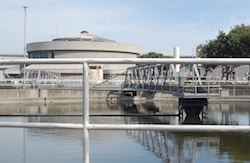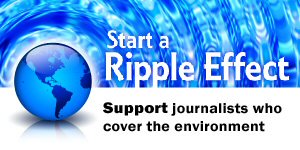SEJournal Online is the digital news magazine of the Society of Environmental Journalists. Learn more about SEJournal Online, including submission, subscription and advertising information.
TipSheet: State Clean Water Fund Means Local Projects, Local News
Your local water may be a little cleaner (and water bills a little lower) because of the Clean Water State Revolving Fund, a Congressionally funded loan program administered by the U.S. Environmental Protection Agency.
Few communities see these 2 percent loans as burdensome federal intrusion. Just what the Trump Congress will spend on the fund remains to be seen, but it is one part of the EPA budget Congress is not eager to cut. Even the Trump budget does not propose significant reductions.
 |
| The main wastewater treatment plant in Oakland, Calif. Photo: U.S. EPA |
Once Congress appropriates the money for the fund, EPA distributes it to the states according to a fixed formula. Each state, based on its own priorities and subject to certain rules, will then pick the municipal water infrastructure projects, such as wastewater treatment plants, that will receive the funding.
The good news for environmental reporters? Local and state stories that come out of the fiscal 2018 appropriations, whenever Congress finalizes them.
(A similar fund exists for drinking water utilities, by the way, and Tipsheet reported on it in October 2017.)
Here are links to information for each state. States produce “Intended Use Plans” which typically contain project “priority lists” — that priority list is what you are looking for.
Note that we list the most recent documents made available by the state — which may vary in terms of “fiscal year” and draft/final status. File formats vary; some may download as PDFs, Excel or Word documents.
- Alaska: General Information | Project List
- Arizona: General Information | Project List
- Arkansas: General Information | Project List
- California: General Information | Project List
- Colorado: General Information | Project List
- Connecticut: General Information | Project List
- Delaware: General Information | Project List
- Florida: General Information | Project List
- Georgia: General Information | Project List
- Hawaii: General Information | Project List
- Idaho: General Information | Project List
- Illinois: General Information | Project List
- Indiana: General Information | Small Systems Project List | Large Systems Project List
- Iowa: General Information | Project List
- Kansas: General Information | Project List
- Kentucky: General Information | Project List
- Louisiana: General Information | Project List
- Maine: General Information | Project List
- Maryland: General Information | Project List
- Massachusetts: General Information | Project List
- Michigan: General Information | Project List
- Minnesota: General Information | Project List
- Mississippi: General Information | Project List
- Missouri: General Information | Project List
- Montana: General Information | Project List
- Nebraska: General Information | Project List
- Nevada: General Information | Project List
- New Hampshire: General Information | Project List
- New Jersey: General Information | Project List
- New Mexico: General Information | Project List
- New York: General Information | Project List
- North Carolina: General Information | Project List
- North Dakota: General Information | Project List
- Ohio: General Information | Project List
- Oklahoma: General Information | Project List
- Oregon: General Information | Project List
- Pennsylvania: General Information | Project List
- Rhode Island: General Information | Project List
- South Carolina: General Information | Project List
- South Dakota: General Information | Project List
- Tennessee: General Information | Project List
- Texas: General Information | Project List
- Utah: General Information | Project List
- Vermont: General Information | Project List (you can open this as a PDF file, although it lacks extension)
- Virginia: General Information | Project List
- Washington: General Information | Project List
- West Virginia: General Information | Project List
- Wisconsin: General Information | Project List
- Wyoming: General Information | Project List
* From the weekly news magazine SEJournal Online, Vol. 2, No. 42. Content from each new issue of SEJournal Online is available to the public via the SEJournal Online main page. Subscribe to the e-newsletter here. And see past issues of the SEJournal archived here.














 Advertisement
Advertisement 



